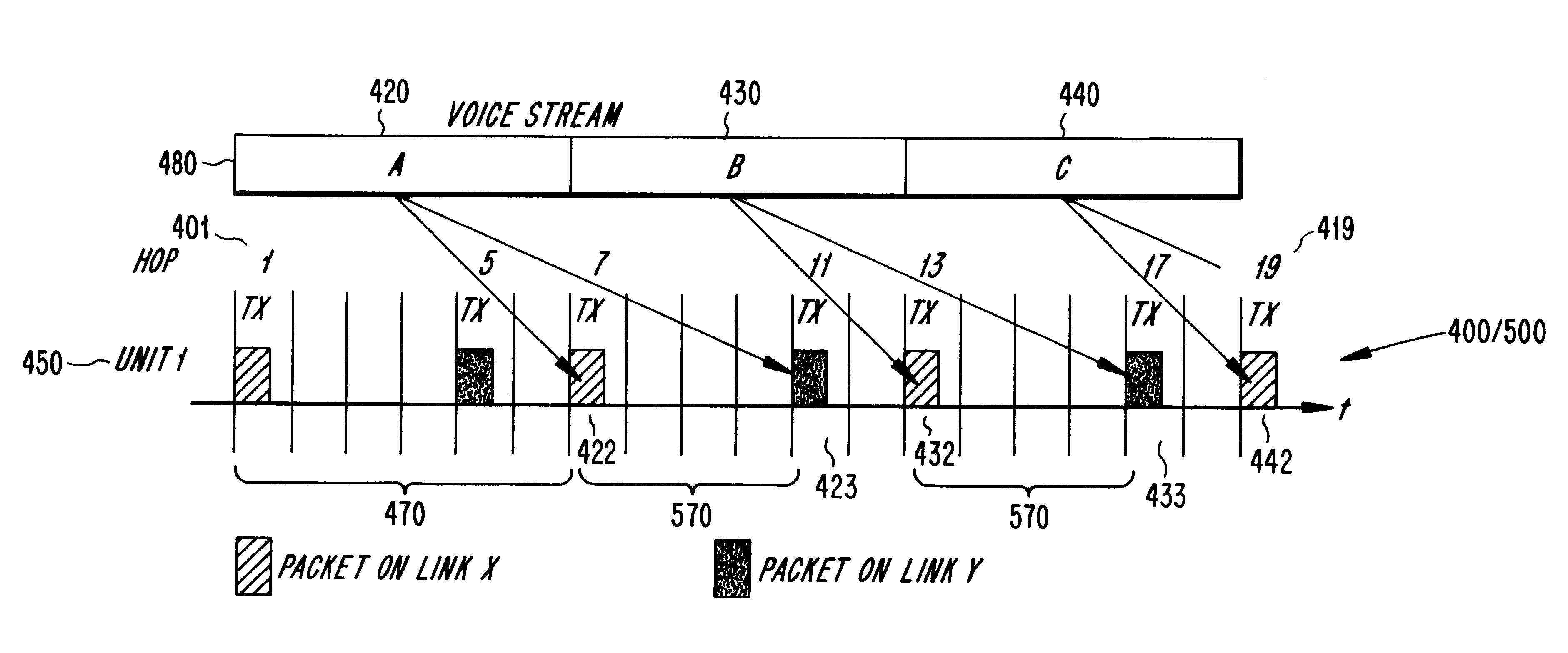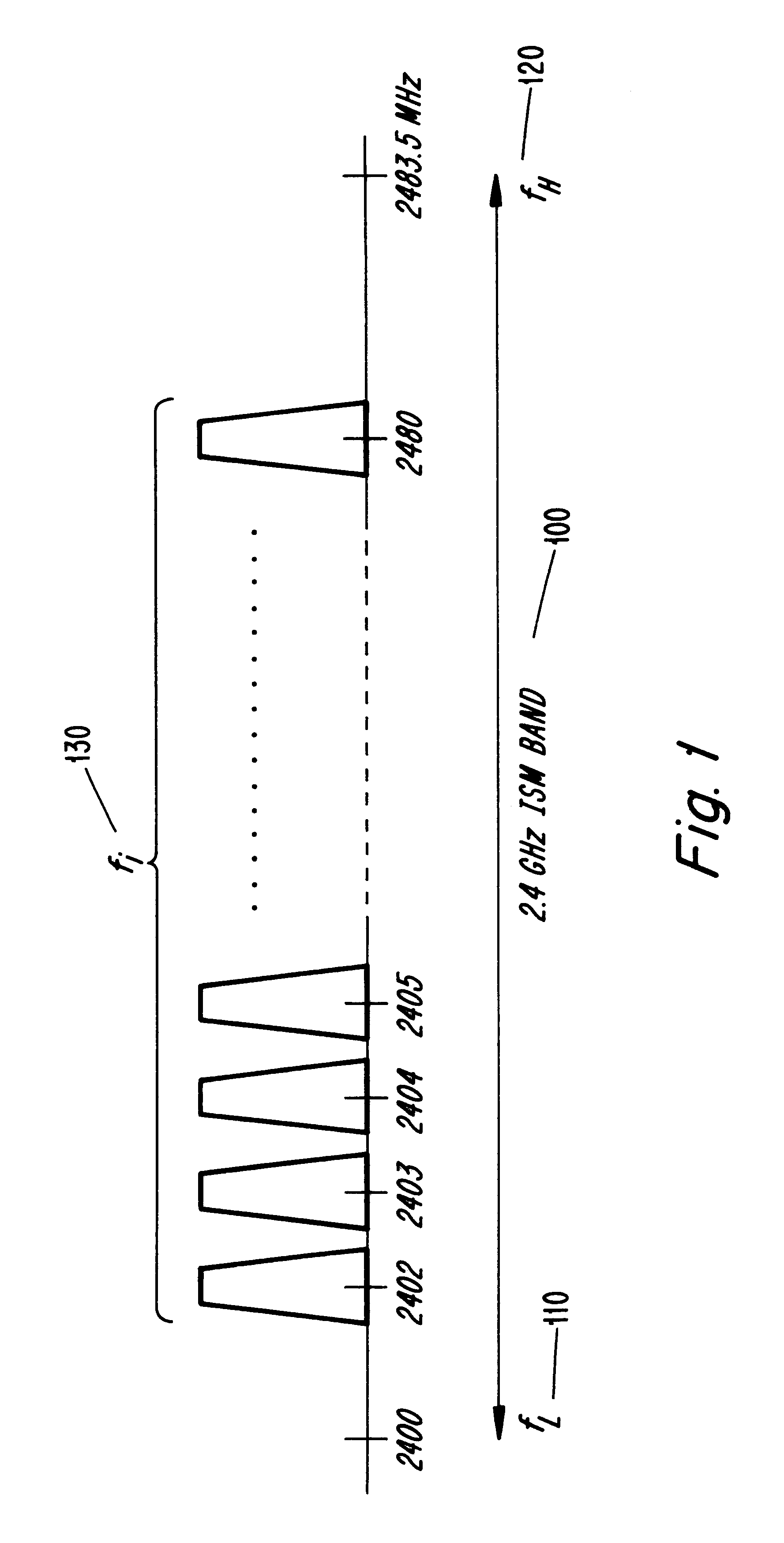Time and frequency diversity in FH/TDD systems
a time and frequency diversity technology, applied in the field of radio systems, can solve the problems of limited overlapping cell number, ds-based raw data rate, and relatively unpredictable interference from microwave ovens, so as to ensure frequency diversity and improve reception
- Summary
- Abstract
- Description
- Claims
- Application Information
AI Technical Summary
Benefits of technology
Problems solved by technology
Method used
Image
Examples
Embodiment Construction
The various features of the invention will now be described with reference to the figures, in which like parts are identified with the same reference characters.
Since the ISM band at 2.45 GHz has been opened for commercial applications, many products have been introduced providing wireless communications in these bands. The usage of the band is restricted in the US by the Part 15 rules of the FCC and in Europe by the ETS 300 328 of the ETSI. In other countries throughout the world, similar rules may apply. In short, as previously described, the rules require systems operating in the ISM band to spread their transmit signal power over the band in order to spread the interference they produce and to increase interference immunity at the receiver. Spreading may be obtained either by FH spreading or DS spreading.
Thus, generally, the FH system of the present invention uses a FH / TDD channel divided into time slots in a radio communications system including a transceiver which alternately ...
PUM
 Login to View More
Login to View More Abstract
Description
Claims
Application Information
 Login to View More
Login to View More - R&D
- Intellectual Property
- Life Sciences
- Materials
- Tech Scout
- Unparalleled Data Quality
- Higher Quality Content
- 60% Fewer Hallucinations
Browse by: Latest US Patents, China's latest patents, Technical Efficacy Thesaurus, Application Domain, Technology Topic, Popular Technical Reports.
© 2025 PatSnap. All rights reserved.Legal|Privacy policy|Modern Slavery Act Transparency Statement|Sitemap|About US| Contact US: help@patsnap.com



